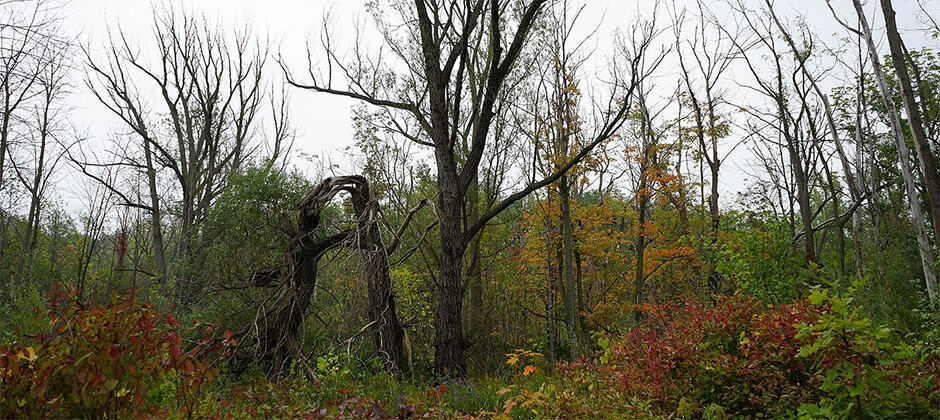Share this article
Resistant trees may hold key to surviving ash borer
When the invasive emerald ash borer devastated a plantation of ash trees at Penn State University, only a handful of the trees survived, but those trees could hold the key to how ash trees can withstand the infestation.
Since its arrival in North America was first discovered in 2002, the emerald ash borer (Agrilus planipennis) has grown to become the most destructive insect known on the continent, wiping out ash trees in 35 states and five Canadian provinces, from Nova Scotia to Colorado and Manitoba to Georgia.
“It’s one of the most devastating of all pests to hit our trees,” said Kim Steiner, professor of forest biology at Penn State. “In its impact, the emerald ash borer is in the same category as Dutch elm disease and chestnut blight.”
In 1975, as a recent Penn State faculty member, Steiner collected seeds from wild green ash trees in 27 states and Canadian provinces. He grew the seedlings for two years before planting 2,100 of them, all 12 feet apart, in a seven-acre plot, along with a few white ash trees.
As of August, only 13 trees remained of the 1,762 trees that were alive when the emerald ash borer arrived. But the demise of the 7-acre plantation revealed reason for optimism about the future, Steiner believes. As part of a six-year study published in Biological Invasions, Steiner and his team found that injury and death from emerald ash borers were influenced by genetics, among other factors, suggesting that some genotypes will survive the infestation.
“Like any family,” Steiner said, “whether we’re talking about humans or deer or trees, the members of a family are different in some ways genetically from the members of another family. And for wild populations that have survived in place for thousands of years, in different climates, and largely isolated from pollination by trees great distances away, there are likely to be differences among populations as well.”
“We found that both population and family influenced the rate at which trees succumbed to the insect,” Steiner said. Through breeding and selection, the researchers concluded, the resistance of the resistance of green ash could be increased.
The emerald ash borer is an Asian beetle that most likely arrived accidentally on the continent by cargo ship. Females lay eggs in the bark of ash trees, and the larvae bore into the trees’ nutrient-conducting tissue, effectively strangling them.
Steiner said more research was needed to determine how the trees were resisting the insects, but the fact that some are resisting the insect and a few are ultimately surviving offers hope that, as the insect declines with the loss of its host trees, ash trees will remain and future populations will be more resistant.
“I see that as some good news,” he said.
Header Image: The emerald ash borer has devastated ash trees across the continent, including this stand in Ontario. ©Michael Hunter








